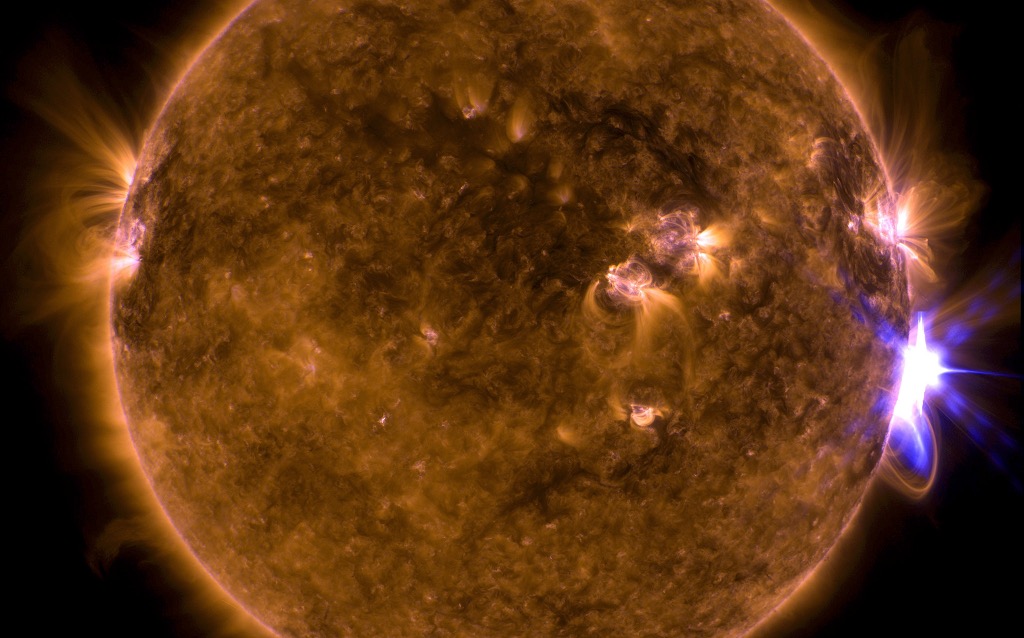
Alien world traps most of the visible light falling into its atmosphere
Don't go looking for the proverbial black cat eating licorice in a coal bin on the planet WASP-12b. Twice the size of any planet found in our solar system, the world is as black as fresh asphalt. Unlike other planets in its class, WASP-12b has the unique capability to trap at least 94 percent of the visible starlight falling into its atmosphere.
The temperature of the atmosphere is a seething 4,600 degrees Fahrenheit, which prevents the formation of reflective clouds on the day side. The planet orbits so close to its host that it is tidally locked, which means that it keeps the same side always facing the star.
The exoplanet isn't dining alone. Its host star is also having a feast: gobbling up material swirling off the exoplanet's super-heated atmosphere.
This oddball exoplanet is one of a class of so-called "hot Jupiters" that orbit very close to their host star and are heated to extreme temperatures. WASP-12b circles a Sun-like star 1,400 light-years from Earth.
via Hubble - News feed
http://hubblesite.org/news_release/news/2017-38
